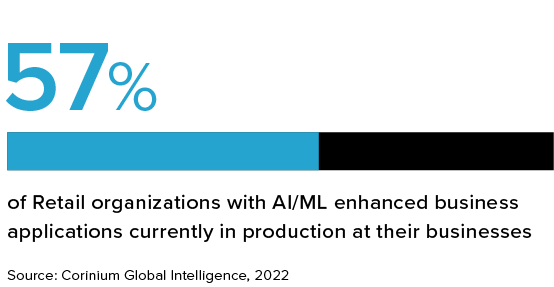The Big Picture: Data is Coming of Age and Has a Point to Prove

Almost every enterprise in our survey has reached a baseline level of data maturity. The task now is to source high-quality data while staying ahead of regulators and delivering business outcomes faster
The era of fighting to convince people about the value of data and analytics is at an end. While pockets of resistance remain here and there in North American businesses, the vast majority are sold on the value of data-driven insights.
“Everybody wants data, baby!” says Sean MacCarthy, Vice President of Analytics at the outdoor leisure retailer Good Sam. “We’ve just gotta give it to them in the right way.”
Processes, Platforms, and People Are Key to Maturing
Of the 100 data and analytics leaders in the US and Canada that we surveyed, only one respondent – who works in manufacturing – said enterprises in their industry had yet to secure executive support and budget for data strategies.
But while buy-in for the idea of data is no longer a key concern, that doesn’t mean everyone has bought into investing in the processes, platforms, and training required to source the high-quality data needed to produce results.
“There's some human somewhere, making a decision in the real world, making data entry points,” MacCarthy says. “And how much have you made sure that they know, as part of their job, that those data inputs are incredibly valuable?”
That, he adds, is the key concern data leaders in many industries should address as they look to achieve greater data maturity over the coming year.
It will require a culture shift away from viewing data, analytics, and AI as the sole domain of data scientists and other specialists. But our findings suggest there is a way to go to achieve that.
Only a minority, 11%, said that businesses in their sector had “fully embedded” data and advanced analytics into company processes, creating continuous feedback loops to fuel innovation.
The good news is that most enterprises have now reached a baseline level of maturity; 95% said data was available to guide day-to-day decisions. Now, the task is to ensure it is properly used.
“Everybody wants data, baby! We’ve just gotta give it to them in the right way.”
Sean MacCarthy, Vice President of Analytics, Good Sam
The US is Playing ‘Catch-Up’ on Data Privacy
Dealing with regulations and managing compliance is by far the most widespread challenge facing North American data leaders this year. Almost two-thirds told us they were still tackling this issue.
In the US, legislators have been slower than elsewhere to build regulatory frameworks to deal with fast-changing data analytics tools and algorithms.
But enough time has now elapsed since the California Consumer Privacy Act (CCPA) was passed in 2018 that legal rulings are beginning to come down, signaling how data protection laws may soon be enforced nationwide.
“We're trying to play catch up quickly,” MacCarthy says. “The next 12 months will be about doing a lot of that work. Your company will have more guidance as to just how judges are interpreting these rules.”
As they work to stay ahead of the regulators, 56% of data leaders said they are also struggling to deliver business outcomes fast enough, another sign of the increasing pressure on them to deliver.
“I think some until now have managed to evade having to demonstrate those results,” says Ken Ho, Chief Analytics Officer at financial services company Synovus. “But it's beginning to come under a microscope.”
Determining a cloud strategy is, according to our results, an equally pressing concern; 56% said they were dealing with this. Other top challenges include a lack of interoperability with legacy systems, the risk of vendor lock-in, and difficulties moving ideas into production.

Data and Analytics Platforms Will Help Drive Change
Across the industries we surveyed, 47% of data leaders plan to invest more into data and analytics platforms in the next year as they develop their enterprise data and analytics ecosystems. In addition, a total of 82% either have made or plan to make investments into data pipeline automation.
These technologies are powerful tools for data leaders to more effectively manage and operationalize increasingly complex data workflows. In competitive data and analytics-driven industries like the ones we surveyed, effectively combining these technologies will be essential to improve visibility by reducing reliance on disparate tools.
There are also signs of increasing interest in data fabric and data mesh, with 40% looking to incorporate the former and 23% the latter. Data mesh is the concept of not moving data from where it originates, but rather creating a layer over the top of it to allow access to it from anywhere. Data fabric, meanwhile, is the architecture used to implement this.
Among other things, this helps cut time to market, according to Pawan Verma, Chief Data Officer at the Industrial and Commercial Bank of China.
“If you have to physically move the data, either to a data lake or a cloud, there is inherent lag,” he says. “Unless I move everything into one central place, it's just impossible to have consistent standards for data management. But if it's a mesh, everything is following the same standards without moving the data.”
“Unless I move everything into one central place, it's just impossible to have consistent standards for data management. But if it's a mesh, everything is following the same standards without moving the data”
Pawan Verma
Chief Data Officer, Industrial and Commercial Bank of China
This article is an excerpt from our '2022 Data Leadership Trends in North America' report, produced in partnership with Cloudera. To download your copy of the full research click here


